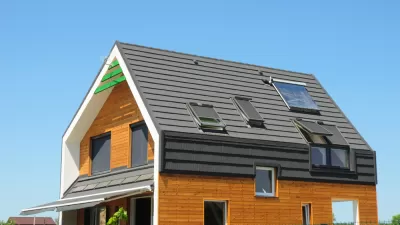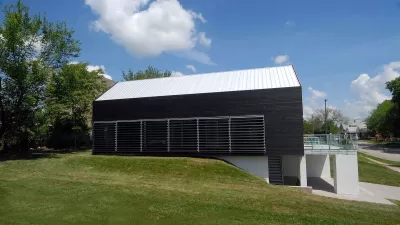From Passive House design to a broader range of amenities, affordable housing developers are finding new ways to make housing more efficient, comfortable, and flexible for residents.

In an article for Building Design & Construction, Quinn Purcell highlights the ten most relevant trends in affordable housing development. “Among affordable housing developers today, there’s one commonality tying projects together: uncertainty.”
Passive House design takes the top spot, signaling the growing importance of sustainability in building practices. “In today’s affordable housing landscape, request for proposals (RFPs) are identifying a desire for net zero operational, Passive House, and WELL building standards—more than just green design.”
Builders are also including more amenities that recognize the need for outdoor space and community areas. “Across the board, we’re seeing an increase in amenities that were once considered market-rate. Rooftop spaces, outdoor recreation, and courtyards are increasingly common (especially since the Coronavirus pandemic brought more people to the outdoors).”
Affordable housing is also a prime candidate for Trauma-Informed Design (TiD), an approach that uses thoughtful design to create an environment of safety and security. Similarly, developers are moving toward mixed-use projects, higher density, and heightened connectivity to the local community and transit hubs.
In addition to trends in architecture and design, the article also highlights regulatory challenges and trends such as lengthy project timelines and a growing interest in combining various local, state, and federal incentives and credits to make projects financially viable.
FULL STORY: Top 10 trends in affordable housing

Alabama: Trump Terminates Settlements for Black Communities Harmed By Raw Sewage
Trump deemed the landmark civil rights agreement “illegal DEI and environmental justice policy.”

Planetizen Federal Action Tracker
A weekly monitor of how Trump’s orders and actions are impacting planners and planning in America.

The 120 Year Old Tiny Home Villages That Sheltered San Francisco’s Earthquake Refugees
More than a century ago, San Francisco mobilized to house thousands of residents displaced by the 1906 earthquake. Could their strategy offer a model for the present?

In Both Crashes and Crime, Public Transportation is Far Safer than Driving
Contrary to popular assumptions, public transportation has far lower crash and crime rates than automobile travel. For safer communities, improve and encourage transit travel.

Report: Zoning Reforms Should Complement Nashville’s Ambitious Transit Plan
Without reform, restrictive zoning codes will limit the impact of the city’s planned transit expansion and could exclude some of the residents who depend on transit the most.

Judge Orders Release of Frozen IRA, IIJA Funding
The decision is a victory for environmental groups who charged that freezing funds for critical infrastructure and disaster response programs caused “real and irreparable harm” to communities.
Urban Design for Planners 1: Software Tools
This six-course series explores essential urban design concepts using open source software and equips planners with the tools they need to participate fully in the urban design process.
Planning for Universal Design
Learn the tools for implementing Universal Design in planning regulations.
Clanton & Associates, Inc.
Jessamine County Fiscal Court
Institute for Housing and Urban Development Studies (IHS)
City of Grandview
Harvard GSD Executive Education
Toledo-Lucas County Plan Commissions
Salt Lake City
NYU Wagner Graduate School of Public Service





























